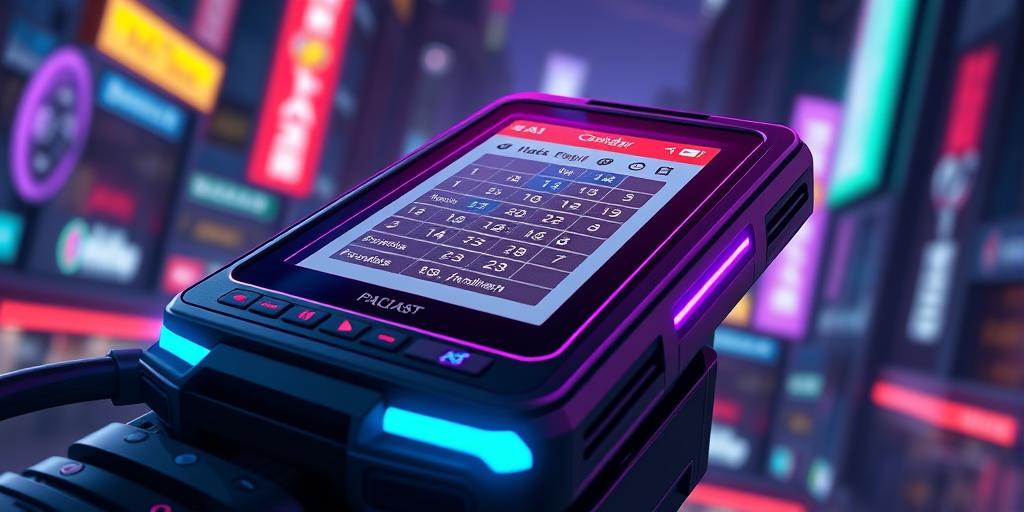The Rise and Fall of PDA Devices: A Nostalgic Journey
Do you remember the thrill of owning a PDA? These pocket-sized powerhouses were once the epitome of personal tech, promising seamless organization and connectivity before smartphones even existed. But what happened? Where did these digital marvels go? Join us on a nostalgic journey as we explore the rise and fall of PDA devices, reminiscing about the tech that paved the way for the mobile world we know today. Prepare for a dose of serious tech nostalgia!
The Heyday of Handhelds: PDA’s Golden Age
The Personal Digital Assistant (PDA) emerged in the late 1980s and early 1990s, promising to revolutionize personal organization. These devices, initially bulky and expensive, offered a glimpse into a future where information was readily accessible on the go. Early models, like the Apple Newton MessagePad, were groundbreaking, despite their sometimes-quirky handwriting recognition. The release of Palm Pilot in 1996 marked a turning point, introducing a user-friendly interface and sleek design that captured the hearts (and hands) of many users. The Palm Pilot and its successors became synonymous with PDA, defining an era of productivity and pocket-sized computing. Remember the satisfying click of the stylus on the screen? Ah, the memories!
Key Features and Innovations:
PDAs rapidly evolved, integrating features that we now consider standard in smartphones. Early models focused on calendaring, contact management, and note-taking. Later iterations incorporated improved processors, larger screens, and internet connectivity via infrared or cellular networks. The ability to sync data with desktop computers was a game changer, ensuring that information was always up-to-date. This seamless integration between handheld and desktop was key to the PDA’s appeal. The introduction of Pocket PC, a competing platform from Microsoft, added further momentum to the growth of the market. The PDA wasn’t just about work; games and other apps soon found their way onto these devices, turning them into much more than simple organizers.
The Smartphone Revolution: The Beginning of the End?
The early 2000s saw the emergence of smartphones, which integrated the functionality of PDAs with cellular phone capabilities. While PDAs had already integrated basic communication features, the introduction of the iPhone in 2007 signaled a seismic shift. This revolutionary device seamlessly blended communication, internet access, and powerful apps into one sleek package, offering a level of user-friendliness and power unmatched by existing PDAs. The game had changed. The market for standalone PDAs began to shrink as consumers opted for the all-in-one convenience of the smartphone.
Smartphone vs. PDA: A Comparative Analysis
The key difference between PDAs and smartphones lay in their integrated functionality. PDAs were primarily designed as organizational tools, while smartphones focused on seamless communication and diverse applications. Though PDAs were initially cheaper, smartphones quickly became more affordable, providing greater value for money. The app ecosystem of smartphones became a major advantage, giving users access to a vast array of software unavailable on PDAs. The introduction of touchscreens and advanced operating systems further strengthened the appeal of smartphones, eventually relegating PDAs to niche markets. The touch screen interface, while initially introduced on some PDAs, became synonymous with the smartphone and its intuitive functionality.
The Legacy of PDAs: More Than Just Nostalgia
While the PDA is largely a relic of the past, its impact on the tech world cannot be understated. It laid the groundwork for the modern smartphone, showcasing the potential of mobile computing and the demand for portable devices capable of handling diverse tasks. The design principles and technological advancements pioneered in PDAs influenced the development of many subsequent technologies, including tablets and even smartwatches. Many modern features of smartphones—such as calendar integration, contact management, and note-taking—owe their origins to the innovation seen in early PDAs.
The Enduring Influence on Modern Tech
The PDA’s influence can be seen in several key areas of modern technology. The development of touchscreen interfaces, for instance, was heavily influenced by PDA technology. Furthermore, the focus on personal organization and productivity, hallmarks of the PDA era, remains integral to the design and functionality of today’s smartphones. While the standalone PDA might be a thing of the past, its technological contributions continue to shape the way we interact with our devices today. The minimalist design aesthetics also influenced the design of many modern smartphones, proving that good design transcends technological changes.
The Final Verdict: A Fond Farewell to Our Digital Companions
The rise and fall of the PDA is a testament to the rapid pace of technological innovation. From its humble beginnings as a niche organizational tool to its eventual absorption into the smartphone, the PDA’s journey is one of both triumph and obsolescence. While we might fondly remember the satisfying click of the stylus or the simple elegance of a Palm Pilot, the PDA’s legacy lives on in the devices we use every day. Remember those early days of personal digital computing? Share your fondest PDA memories in the comments below!













